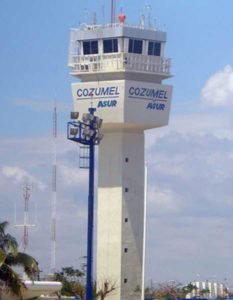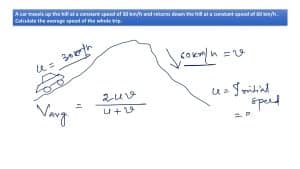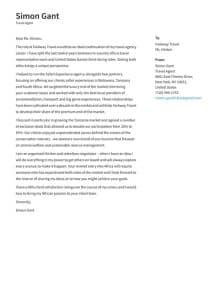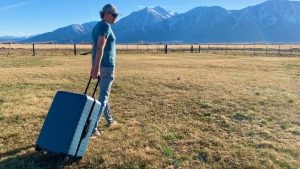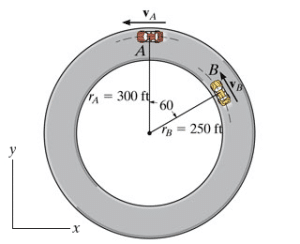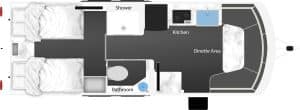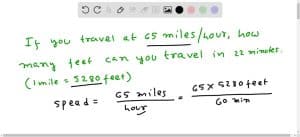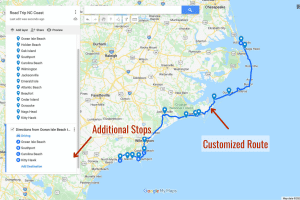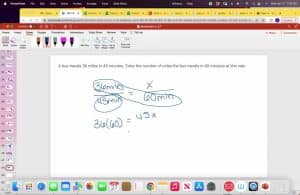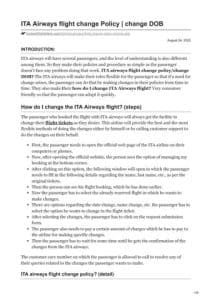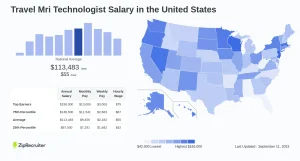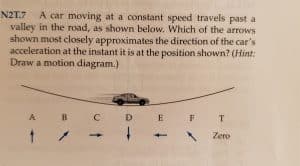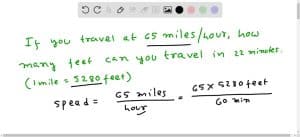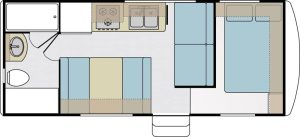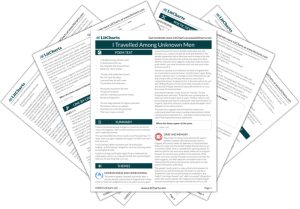Welcome to our Hosteliest blog, where we journey into intriguing travel topics. In today’s read, we will delve into understanding how a jet travels when flying against the wind. Buckle up and let’s take off on this exciting flight of knowledge!
Have you ever wondered about the intricate details that influence your flight journey, like how flying against the wind a jet travels? If that’s the case, then this article is for you. We will delve into this fascinating subject and clear up any misconceptions you might have. So sit tight and prepare for takeoff as we embark on a thrilling exploration of the science behind a jet flying against the wind.
Table of Contents
ToggleUnderstanding the Basics: What Does Flying Against the Wind Mean?
When we talk about “flying against the wind,” we’re discussing the concept of how an aircraft, such as a jet, manages to travel effectively when faced with the presence of headwinds — winds that blow directly against the direction of the plane’s flight path.
The Influence of Wind on Jet Travel
You might be wondering, “How does flying against the wind affect a jet’s travel?” Well, the impact can be significant. Headwinds can slow down a jet, thus increasing the travel time and fuel consumption. On the other hand, tailwinds (winds blowing in the same direction as the plane) can speed up a flight, reducing journey time and fuel usage.
How Do Jets Tackle Headwinds?
Pilots and air traffic controllers meticulously plan out flight paths to use headwinds and crosswinds to their advantage or to lessen their negative impact. They achieve this by altering the altitude or the route to find the most favorable wind conditions.
Impact of Flying Against the Wind on Your Travel Experience
Flying against the wind can result in a longer flight time, which may lead to delayed arrivals. However, airlines factor in these potential delays when creating their schedules and always prioritize safety over speed.
So, the next time you’re on a flight and the pilot makes an announcement about changing altitudes due to winds, you’ll know that it’s all part of ensuring you have a safe and smooth travel experience.
Summary
In conclusion, flying against the wind a jet travels is a fundamental aspect of aviation that affects not only the performance of the aircraft but also your in-flight experience. Despite the challenges posed by headwinds, skilled pilots and advanced technology enable jets to navigate these conditions adeptly.
And while flying against the wind may add some extra minutes to your journey, remember that it’s all part of the endeavor to ensure your safety and comfort high above the clouds. So sit back, relax, and enjoy the flight, knowing the wonders of science and engineering are at work, bringing you closer to your destination — one wind gust at a time.
Traveling might seem complex, but understanding such small yet crucial aspects can make your journey more enjoyable and impactful. Keep exploring, keep learning, and until next time, safe travels!
Defying the Elements: A Deep Dive into Jet Travel Against the Wind
Jet travel against the wind is an inherent part of any air journey. Despite its numerous obstacles, the aviation industry has continually evolved and improved to mitigate the effects of unfavorable winds on the entire travel experience. From hotel bookings to your final touchdown, understanding the impact of wind on jet travel can significantly enhance your journey.
The absolute first thing to comprehend is that winds are a significant factor in flight dynamics. Both tailwinds and headwinds have substantial effects on a plane’s speed, fuel consumption, and ultimately the duration of the trip. A strong headwind will slow an airplane down, increasing the time spent in the air and consequently the overall trip time. On the flip side, a tailwind will speed up the aircraft, considerably reducing the flight duration.
This difference in travel time can have ripple effects on your whole journey, including your hotel check-in and check-out times. For example, an unexpected delay due to headwinds may cause you to arrive late at your hotel, potentially leading to complications if not previously communicated. Conversely, reaching your destination earlier than expected could alter your hotel room’s readiness or availability.
Further, flights departing early in the morning or late in the night are more likely to experience calmer winds, giving you smoother flights. This information can also be helpful when planning your hotel stays and dealing with jet lag. Choosing a hotel that offers flexible check-in and checkout times can help alleviate some of these timing issues.
A deep understanding of jet travel against the wind can empower you as a traveler. It can guide you to make better decisions from choosing flight times to hotel accommodations, ensuring a much more pleasant journey. Therefore, always keep an eye on the weather forecast and keep your hotel informed about any changes to your travel plans.
Understanding The Physics of Jet Travel Against the Wind
Aircraft, especially jets, are designed to combat prevailing winds and still maintain their set routes. This is due to Bernoulli’s principle that explains how planes achieve lift by the curve and angling of their wings against the wind. As a jet flies into the wind, the pressure differential between the upper and lower surfaces of the wings enables it to keep aloft. The engines provide the thrust necessary to maintain forward motion against the wind’s force. This process may cause flights to take longer and consume more fuel, but it does not pose significant safety risks. The ability of jets to fly against the wind is a testament to human ingenuity in aerodynamics and engineering.
The Effects of Wind on Flight Duration and Fuel Consumption
While flying against the wind might sound alarming to those unfamiliar with aviation mechanics, it’s actually factored into every flight’s planning. It does, however, have implications on the flight duration and fuel consumption. When jet airplanes fly against the wind, they have to exert more power to maintain their scheduled flight time, thus consuming more fuel. Flight planners calculate the effect of headwinds (winds blowing directly against the plane) and tailwinds (winds blowing in the same direction as the plane) into their flight plans to ensure optimal fuel consumption and timely arrival.
Implications for Travelers and Hotel Bookings
For travelers, understanding that flying against the wind could potentially lengthen their flight time is vital. It means that there could be delays, which could affect connecting flights and hotel check-in times. Therefore, it’s recommended to plan schedules with some flexibility and inform hotels about potential late arrivals. By keeping informed about the weather conditions and the potential for delays due to headwinds, travel disruptions can be minimized. Moreover, it’s beneficial to book hotels that offer 24-hour check-in or have flexible policies for late arrivals due to flight delays.
Frequently Asked Questions (FAQ)
“What are the challenges a jet may face when travelling against the wind?”
Traveling against the wind can pose several challenges for a jet.
Firstly, wind resistance is a significant issue. This is the force that wind exerts against the movement of the jet. It can slow down the aircraft, making the flight duration longer than intended. This, in turn, can lead to increased fuel consumption as the jet has to work harder to maintain its speed.
Secondly, there is the problem of turbulence. Often, winds do not blow at a steady speed or in a consistent direction, and this can cause the jet to shake or move around during the flight. Turbulence can range from a mild annoyance to a severe risk, even leading to injuries in extreme cases.
The jet may also face challenges with navigation and controlling. Pilots need to make adjustments to their course and altitude to tackle headwinds. These adjustments can be complex and require a lot of skill and experience.
Lastly, safety concerns are an imperative aspect. While modern jets are designed to handle strong winds, severe conditions can still present a safety risk. This could lead to flight delays or cancellations, leaving passengers grounded until conditions improve.
Hence, flying against the wind is not just an inconvenience, but it also poses several technical and logistical issues that airlines and pilots must effectively address to ensure a safe and efficient journey.
“How does flying against the wind impact fuel consumption of jets during travel?”
Flying against the wind significantly affects the fuel consumption of jets during travel. The resistance encountered from headwinds requires airplanes to exert more power and consequently burn more fuel.
Fuel consumption is a key consideration in aviation, as it directly impacts the cost of air travel. Several factors can influence this, including the weight of the plane, the design of the aircraft, and the environment conditions the plane is flying through.
However, one of the most notable factors is wind direction and speed. When flying against the wind, or into a headwind, the jet must work harder to maintain its speed and altitude. This extra effort requires more fuel.
This increase in fuel use can have significant implications for the journey: it can mean that flights need to carry more fuel, which adds weight and can further increase fuel consumption. In some extreme cases, it may even require an unplanned stop to refuel.
From a passenger’s perspective, flying against the wind can also result in longer flight times. This can lead to increased costs for airlines, both in terms of fuel and potential overtime for staff.
Consequently, pilots and airlines carefully consider wind conditions when planning flight paths. They often seek to take advantage of tailwinds — winds blowing in the same direction as the plane’s movement — which can reduce fuel consumption and shorten travel times.
In conclusion, flying against the wind can greatly impact the fuel consumption of jets during travel, leading to increased costs and potentially longer flight times. To mitigate these effects, airlines make strategic decisions about their flight routes and scheduling.
“What measures do pilots and airlines take when flying a jet against the wind?”
Pilots and airlines utilize several precautions and strategic measures when flying a jet against the wind. To start, meticulous planning is implemented before any flight. This includes closely examining weather forecasts to understand wind conditions. If the wind is expected to be too strong, flights may be delayed or cancelled to ensure safety.
Secondly, pilots use a technique known as ‘crabbing’, which involves pointing the nose of the aircraft into the wind to counteract its effects. This often occurs during landing, but can also be useful in-flight.
Another measure is altering the flight path or ‘route optimizing’. Sometimes, the most direct path isn’t the most efficient due to wind patterns. Airlines use sophisticated software to plot the most fuel-efficient route considering the forecasted wind conditions.
Lastly, pilots can alter the cruising altitude. Wind speeds can vary dramatically at different altitudes, so climbing or descending can help a plane find a more favorable wind condition.
Overall, flying against the wind requires careful planning, experienced piloting, and strategic use of technology.
In closing, flying against the wind as a jet travels is an intriguing occurrence that has significant impacts on travel times and fuel efficiency. It’s an aspect of air travel that airline companies have to consider when creating their schedules and flight plans. However, it should not deter any traveler from enjoying the breathtaking experience that air travel offers. The ability to traverse vast distances, cross continents and oceans in mere hours, is one of the marvels of modern technology. So, despite the headwinds, let the thought of your destination – the welcoming ambiance of luxurious hotels or the unbeaten paths of adventurous travel, propel you onward. Happy traveling!



